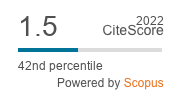Obesity is strongly associated with the degree of inflammation characterised by proinflammatory cytokines, such as tumour necrosis factor-α (TNF-α). Lifestyle modification with exercise is the right strategy because it can stimulate interleukin 6 (IL-6) secretion which acts as an anti-inflammatory. This study aimed to analyse the response of interval and continuous exercise to inflammatory markers in obese women. Twenty-four women participated in this study and were randomly divided into 3 groups: CONG (n=8, control group without any intervention): MCEG (n=8, continuous exercise group) and MIEG (n=8, interval exercise group). ELISA was used to measure the levels of IL-6 and TNF-α, pre-exercise and post-exercise. The data were analysed using the paired sample t-test. The mean levels of TNF-α, pre-exercise and post-exercise, were 19.35±2.73 vs 19.36±2.23 pg/ml (P=0.989) in CONG, 19.42±2.79 vs 16.63±0.82 pg/ml (P=0.017) in MCEG, and 19.46±3.08 vs 16.96±2.11 pg/ml (P=0.079) in MIEG. Mean levels of IL-6, pre-exercise and post-exercise, were 7.56±2.88 vs 7.66±4.12 pg/ml (P=0.957) for CONG, 7.68±3.41 vs 13.97±2.38 pg/ml (P=0.001) for MCEG, and 7.78±1.99 vs 13.66±3.55 pg/ml (P=0.001) for MIEG. We concluded that interval and continuous exercise decreased pro-inflammatory and increased anti-inflammatory cytokines.
RESEARCH ARTICLE
Inflammatory markers in response to interval and continuous exercise in obese women
A. Andarianto Related information
1Sport Health Science, Faculty of Medicine, Universitas Airlangga, Jl. Prof. Dr. Moestopo No.47, 60131 Surabaya, Indonesia.
, P.S. Rejeki Related information1Sport Health Science, Faculty of Medicine, Universitas Airlangga, Jl. Prof. Dr. Moestopo No.47, 60131 Surabaya, Indonesia.
2Medical Program, Faculty of Medicine, Universitas Airlangga, Jl. Prof. Dr. Moestopo No.47, 60131 Surabaya, Indonesia.
3Physiology Division, Department of Medical Physiology and Biochemistry, Faculty of Medicine, Universitas Airlangga, Jl. Prof. Dr. Moestopo No.47, 60131 Surabaya, Indonesia.
*Corresponding author: purwo-s-r@fk.
, Sakina Related information2Medical Program, Faculty of Medicine, Universitas Airlangga, Jl. Prof. Dr. Moestopo No.47, 60131 Surabaya, Indonesia.
3Physiology Division, Department of Medical Physiology and Biochemistry, Faculty of Medicine, Universitas Airlangga, Jl. Prof. Dr. Moestopo No.47, 60131 Surabaya, Indonesia.
*Corresponding author: purwo-s-r@fk.
2Medical Program, Faculty of Medicine, Universitas Airlangga, Jl. Prof. Dr. Moestopo No.47, 60131 Surabaya, Indonesia.
4Department of Anatomy, Histology, and Pharmacology, Faculty of Medicine Universitas Airlangga, Jl. Prof. Dr. Moestopo No.47, 60131 Surabaya Indonesia.
, A. Pranoto Related information4Department of Anatomy, Histology, and Pharmacology, Faculty of Medicine Universitas Airlangga, Jl. Prof. Dr. Moestopo No.47, 60131 Surabaya Indonesia.
5Medical Science, Faculty of Medicine, Universitas Airlangga, Jl. Prof. Dr. Moestopo No.47, 60131 Surabaya, Indonesia.
, T.W. Aga Seputra Related information1Sport Health Science, Faculty of Medicine, Universitas Airlangga, Jl. Prof. Dr. Moestopo No.47, 60131 Surabaya, Indonesia.
, Sugiharto Related information6Department of Sport Science, Faculty of Sport Science, Universitas Negeri Malang, Jl. Semarang No.5, 65145 Malang, Indonesia.
, M. Miftahussurur Related information7Institute of Tropical Disease, Universitas Airlangga, 60286 Surabaya, Indonesia.
8Gastroentero-Hepatology Division, Department of Internal Medicine, Faculty of Medicine, Dr. Soetomo Teaching Hospital, Universitas Airlangga, Jl. Prof. Dr. Moestopo No. 6-8, 60286 Surabaya, Indonesia.
8Gastroentero-Hepatology Division, Department of Internal Medicine, Faculty of Medicine, Dr. Soetomo Teaching Hospital, Universitas Airlangga, Jl. Prof. Dr. Moestopo No. 6-8, 60286 Surabaya, Indonesia.
Comparative Exercise Physiology: 18
(2)- Pages: 135 - 142
Published Online: January 31, 2022
Abstract
2023 Journal Impact Factor
0.9
source: Journal Impact Factor 2023™ from Clarivate™

Institutional Offers
For institutional orders, please contact [email protected].
Purchase Options
-
-
-
A. Byström, H.M. Clayton, E. Hernlund, M. Rhodin and A. Egenvall
-
L. Wright, E. Hernlund, C.T. Fjordbakk, B. Ytrehus, E. Law, M. Uhlhorn and M. Rhodin
-
Jane Williams and David Marlin
-
P.S. Rejeki, A. Pranoto, R.E. Prasetya and S. Sugiharto
-
A. Byström, H.M. Clayton, E. Hernlund, M. Rhodin and A. Egenvall
-
A. Andarianto, P.S. Rejeki, , A. Pranoto, T.W. Aga Seputra, and M. Miftahussurur
-
E.J. Hall and A.J. Carter
-
L. St. George, S.H. Roy, J. Richards, J. Sinclair and S.J. Hobbs



